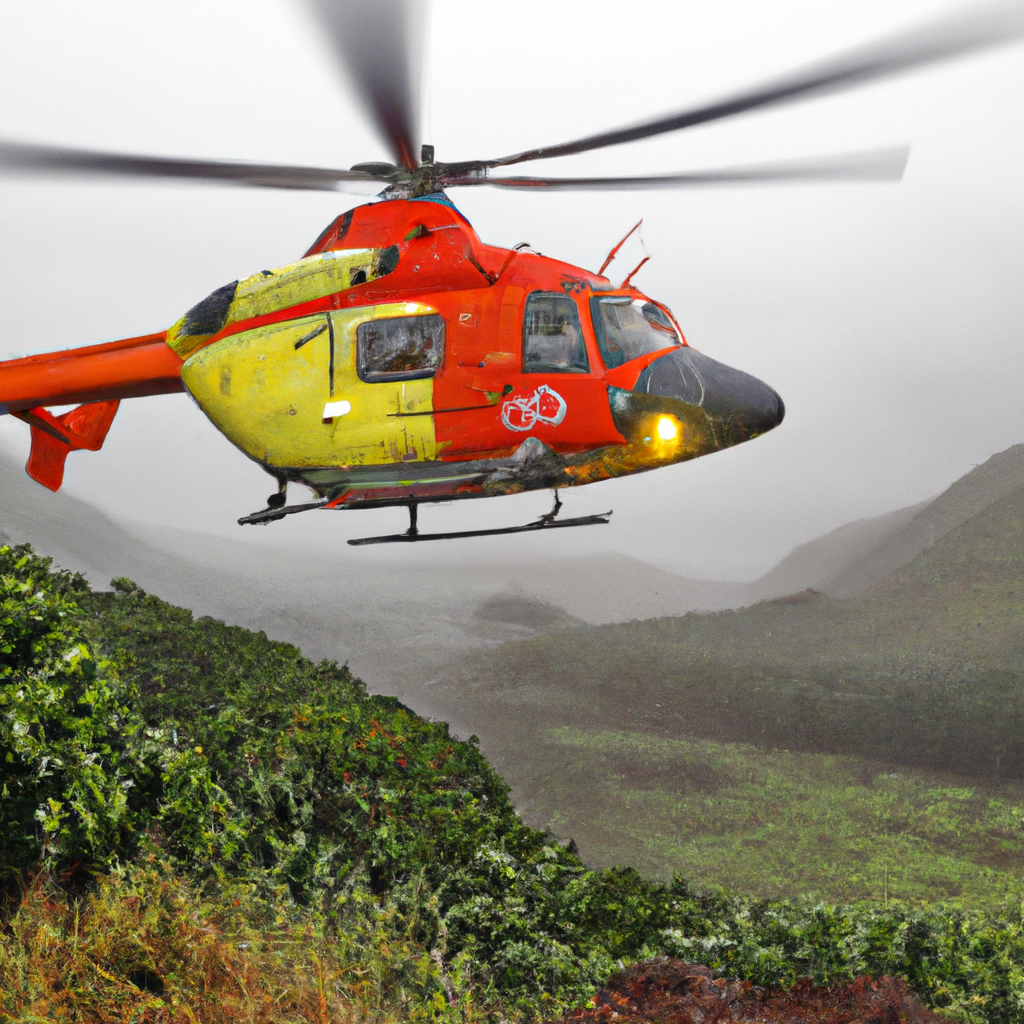So you’re curious about humanitarian air ambulance missions, huh? Well, let me tell you, it’s a fascinating topic with some pretty incredible trends and innovations happening right now. Picture this: a team of skilled medical professionals soaring through the sky, working tirelessly to save lives in areas that are difficult to reach by traditional means. These missions are not only about transporting patients, but also about providing critical care en route, making each flight a race against time. In this article, we’ll take a closer look at some of the latest trends and innovations in humanitarian air ambulance missions that are revolutionizing the way we provide emergency medical services to those in need. Hold on tight, because we’re about to take off on an exhilarating journey into the world of air rescue.
Introduction
Welcome to our comprehensive guide on humanitarian air ambulance missions. In this article, we will explore the concept, importance, recent trends, innovations, challenges, training requirements, case studies, and future directions of humanitarian air ambulance missions. Whether you are interested in understanding the role of air ambulances in saving lives during emergencies or curious about the advancements in this field, this article has got you covered. So, let’s dive in and explore the fascinating world of humanitarian air ambulance missions.
Definition of Humanitarian Air Ambulance Missions
The concept of humanitarian air ambulance missions
Humanitarian air ambulance missions refer to the transportation of critically ill or injured individuals, often in emergency situations, to medical facilities where they can receive essential care. These missions are typically carried out by specially-equipped aircraft, staffed with highly trained medical professionals, who provide vital medical interventions during the transportation process.
Types of humanitarian air ambulance missions
There are various types of humanitarian air ambulance missions, each serving a unique purpose. Some common types include:
- Emergency medical evacuations: These missions involve airlifting patients from the scene of an accident or disaster to a hospital or trauma center. They play a crucial role in ensuring timely and specialized medical care for critically injured individuals.
- Inter-hospital transfers: These missions involve transporting patients from one medical facility to another, often for specialized treatments or procedures that are not available at the current location.
- International repatriations: These missions are dedicated to bringing back citizens of one country who are ill or injured abroad, ensuring they receive proper medical care closer to home.
- Humanitarian aid missions: These missions involve providing medical assistance and supplies to areas affected by natural disasters, conflict zones, or other humanitarian crises. Air ambulances are utilized to transport medical personnel, equipment, and supplies to these areas.

Importance of Humanitarian Air Ambulance Missions
Saving lives during emergencies
Humanitarian air ambulance missions play a critical role in saving lives during emergencies. When time is of the essence, air ambulances can rapidly transport patients to hospitals equipped with the necessary medical resources and expertise. This expeditious response helps in minimizing the risk of further complications and increasing the chances of survival.
Providing medical care in disaster-stricken areas
In disaster-stricken areas where infrastructure is severely damaged, humanitarian air ambulance missions become a lifeline for the affected population. Air ambulances can reach remote or inaccessible areas that are cut off from traditional modes of transportation. They enable medical professionals to provide on-site emergency care and transport patients to hospitals or relief centers for comprehensive treatment.
Transporting patients to specialized healthcare facilities
Some patients require specialized care or access to specific medical facilities that may not be available in their local area. Humanitarian air ambulance missions bridge this gap by efficiently transporting patients to healthcare facilities that can provide the required expertise and resources. This ensures that patients receive the best possible treatment for their conditions, ultimately increasing their chances of recovery.
Recent Trends in Humanitarian Air Ambulance Missions
Increasing demand for air ambulance services
In recent years, there has been a significant increase in the demand for air ambulance services globally. This can be attributed to several factors, including the growing population, increasing incidents of natural disasters, and rising awareness about the benefits of air transportation in emergency medical situations. The surge in demand highlights the vital role air ambulances play in providing timely and specialized medical interventions.
Partnerships between air ambulance providers and humanitarian organizations
To enhance their operational capabilities, air ambulance providers are increasingly forming partnerships with humanitarian organizations. These collaborations help in streamlining logistics, optimizing resource allocation, and extending the reach of humanitarian missions. By leveraging the expertise of both parties, these partnerships facilitate more efficient and effective delivery of medical aid to those in need.
Use of drones in remote areas
The use of drones in humanitarian air ambulance missions is a notable trend that has emerged in recent years. Drones offer a cost-effective and agile solution for delivering medical supplies and providing medical assistance in remote or hard-to-reach areas. With advancements in technology, drones equipped with medical equipment and telemedicine capabilities can provide immediate aid and potentially save lives.

Innovations in Humanitarian Air Ambulance Missions
Advanced medical equipment and technology onboard
Humanitarian air ambulances are equipped with state-of-the-art medical equipment and technology. From advanced life support systems to portable ICU equipment, these aircraft are effectively transformed into flying hospitals. The presence of specialized medical devices and technologies enables medical professionals to provide critical care during transportation, increasing the chances of positive patient outcomes.
Improved communication systems
Efficient communication is essential in coordinating humanitarian air ambulance missions. To address this need, there have been significant advancements in communication systems onboard air ambulances. From satellite-based communication systems to real-time patient monitoring and telemedicine capabilities, these improvements enable seamless communication between medical teams on board and ground staff, ensuring prompt decision-making and coordinated care.
Efficient logistical support
Logistical challenges can significantly impact the success of humanitarian air ambulance missions. To overcome these challenges, innovations in logistical support have emerged. This includes improved air traffic management systems, efficient coordination with ground transport, and streamlined processes for securing necessary permits and clearances. These innovations help in enhancing mission planning, optimizing routes, and reducing response times.
Challenges Faced in Humanitarian Air Ambulance Missions
Limited accessibility to remote and conflict-affected regions
One of the major challenges in humanitarian air ambulance missions is limited accessibility to remote or conflict-affected regions. In such areas, infrastructure may be damaged, airspace might be restricted, and security risks may exist. Overcoming these challenges requires careful mission planning, collaboration with local authorities, and the use of specialized aircraft or alternative modes of transportation.
Adverse weather conditions
Adverse weather conditions can pose significant challenges to humanitarian air ambulance missions. Strong winds, thunderstorms, heavy rainfall, or fog can make flying conditions unsafe or restrict visibility. Operators must closely monitor weather patterns, implement strict safety protocols, and collaborate with meteorological agencies to ensure the safety of both patients and crew members.
Navigating through regulatory barriers
Navigating through regulatory barriers, both domestically and internationally, can be complex in humanitarian air ambulance missions. Different countries have varying rules and requirements for air transportation, making it essential for operators to have a thorough understanding of these regulations. Compliance with aviation authorities, obtaining necessary permits, and negotiating diplomatic clearances are critical in ensuring smooth operations.

Training and Skill Requirements for Humanitarian Air Ambulance Personnel
Medical training and certifications
Humanitarian air ambulance personnel, including doctors, nurses, and paramedics, require specialized medical training and certifications. They must possess extensive knowledge and skills in emergency medicine, trauma care, critical care, and flight physiology. Regular training programs, continuing education, and recertification are crucial to ensure they stay updated with the latest advancements and best practices in medical care during air transportation.
Emergency response and evacuation protocols
In addition to medical training, humanitarian air ambulance personnel must undergo rigorous training in emergency response and evacuation protocols. They should be proficient in managing high-stress situations, coordinating with ground teams, and providing immediate lifesaving interventions. Training also covers effective communication techniques, patient assessment, and triage, ensuring a systematic approach to patient care during missions.
Crisis management and decision-making skills
Humanitarian air ambulance personnel often operate in challenging and rapidly evolving environments. Therefore, they must possess crisis management and decision-making skills. This includes the ability to prioritize patients based on severity of conditions, adapt to changing circumstances, and make informed decisions under pressure. Regular simulation exercises and situational training are essential in honing these skills.
Case Studies of Successful Humanitarian Air Ambulance Missions
Rescue operation during natural disasters
During natural disasters such as earthquakes, hurricanes, or floods, humanitarian air ambulance missions have proven to be crucial in saving lives. For instance, in the aftermath of the 2010 Haiti earthquake, numerous air ambulances were deployed to transport injured individuals to hospitals in neighboring countries for comprehensive care. These missions played a vital role in reducing mortality rates and providing timely medical interventions to those in need.
Medical evacuation from conflict zones
Humanitarian air ambulance missions have also been instrumental in the evacuation of individuals from conflict zones. In war-torn regions where healthcare infrastructure is crumbling, air ambulances provide a lifeline for civilians and combatants who are injured or in need of urgent medical assistance. These missions rely on coordination with international organizations, local authorities, and diplomatic efforts to ensure safe and swift evacuations.
Remote healthcare delivery
In remote areas with limited access to medical facilities, humanitarian air ambulance missions enable the delivery of healthcare services to underserved populations. These missions involve transporting medical teams, supplies, and equipment to remote communities, where they provide essential medical care, conduct mobile clinics, and offer health education. By bringing healthcare directly to the doorstep of those in need, humanitarian air ambulance missions have the potential to transform healthcare outcomes.

Future Directions in Humanitarian Air Ambulance Missions
Integration of artificial intelligence in emergency medical services
The integration of artificial intelligence (AI) holds great potential for the future of humanitarian air ambulance missions. AI algorithms can assist medical professionals in real-time diagnosis, triage, and decision-making, leading to more accurate and timely interventions. Additionally, AI-powered predictive analytics can help optimize logistics, route planning, and resource allocation, enabling more efficient mission execution.
Exploration of sustainable energy sources for air ambulances
The search for sustainable energy sources is becoming increasingly important in the aviation industry, including humanitarian air ambulance missions. As the world focuses on reducing carbon emissions, exploring alternative fuels or electric aircraft for air ambulances can contribute to a greener and more environmentally friendly approach. This ensures that air ambulance services remain sustainable without compromising on their life-saving capabilities.
Enhanced telemedicine capabilities
Advancements in telemedicine capabilities are expected to play a significant role in the future of humanitarian air ambulance missions. Telemedicine allows for remote consultation and diagnosis, reducing the need for physical transportation of patients in certain cases. By leveraging telemedicine technologies, air ambulance crews can receive real-time guidance from medical experts on the ground, enabling prompt and appropriate care during transportation.
Conclusion
Humanitarian air ambulance missions continue to evolve, driven by advancements in technology, training, and global collaboration. These missions are instrumental in saving lives during emergencies, providing medical care in disaster-stricken areas, and transporting patients to specialized healthcare facilities. Despite the challenges faced, the future of humanitarian air ambulance missions looks promising, with the integration of artificial intelligence, sustainable energy sources, and enhanced telemedicine capabilities. As we move forward, it is essential to recognize the invaluable contributions made by humanitarian air ambulance personnel and continue supporting their efforts to ensure that medical assistance reaches those in need, whenever and wherever they may be.



